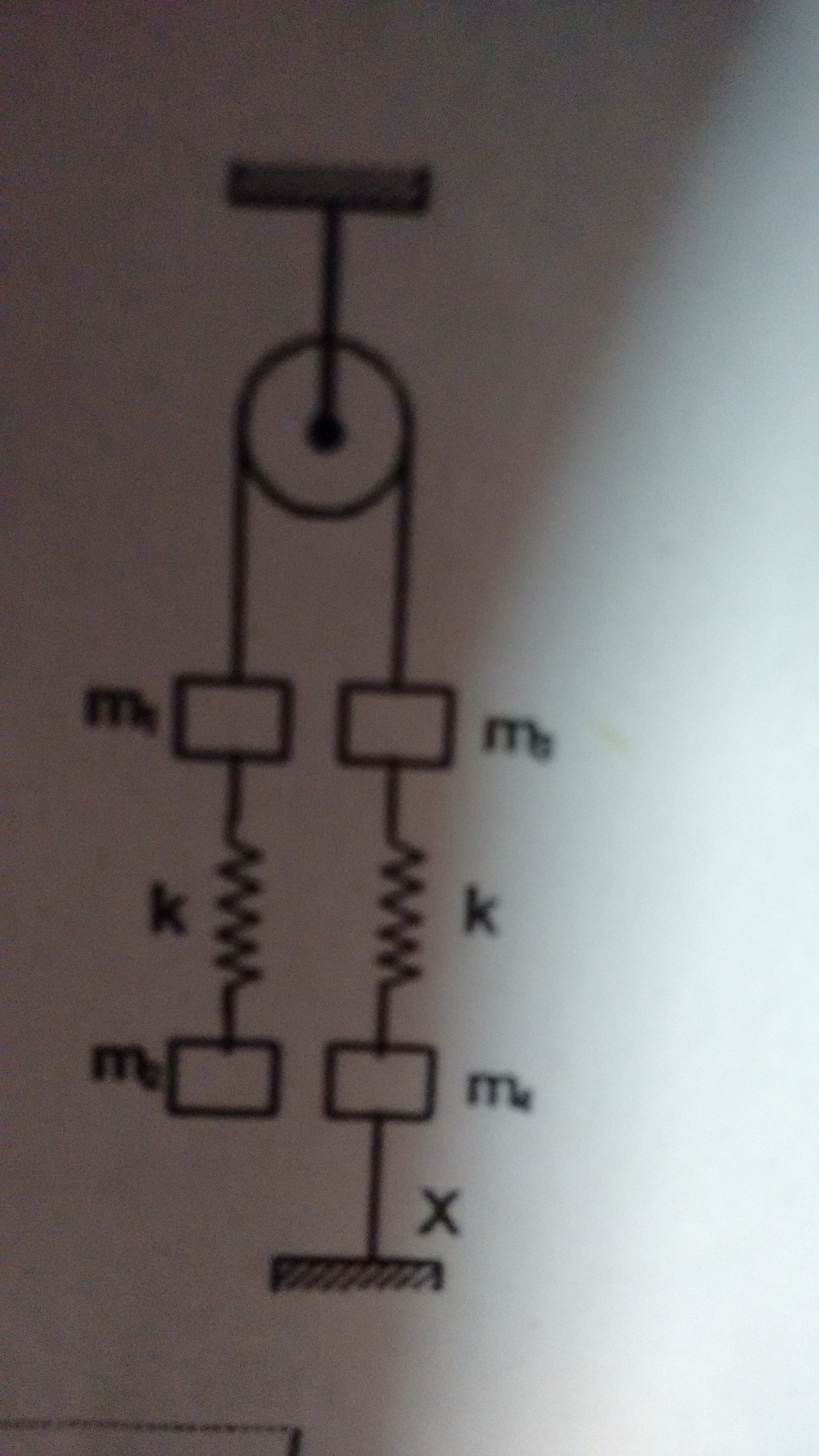Wanted help in these

1) For the system shown in the figure the acceleration of the mass immediately after the lower thread is cut will be (assume the threads and springs are light and there is no friction) The diagram is above mass is with string and above it is towards left of is .
2) If is an increasing function and for and is continuous for . Find
3) Let and . Find the whole area bounded by and and
No vote yet
1 vote
Easy Math Editor
This discussion board is a place to discuss our Daily Challenges and the math and science related to those challenges. Explanations are more than just a solution — they should explain the steps and thinking strategies that you used to obtain the solution. Comments should further the discussion of math and science.
When posting on Brilliant:
*italics*or_italics_**bold**or__bold__paragraph 1
paragraph 2
[example link](https://brilliant.org)> This is a quote# I indented these lines # 4 spaces, and now they show # up as a code block. print "hello world"\(...\)or\[...\]to ensure proper formatting.2 \times 32^{34}a_{i-1}\frac{2}{3}\sqrt{2}\sum_{i=1}^3\sin \theta\boxed{123}Comments
Nice problems.
Just write free body diagrams for each block. What you need to find is the force in the right hand side spring. Once the string is cut, the force in the right hand side spring is the only thing other than gravity acting on m4. After solving using F.B.D, you will get the force.
Firstly, substitute x−t in place of t in the RHS integral. Then take derivative w.r.t x on both sides. Use the given equation and substitute RHS in place of LHS wherever necessary after taking derivative. If done right, you will now be having an equation in which you have ∫0xf(x)dx, f(x) and x only. You can now write this as a differential equation where y=∫0xf(x)dx. Since the differential equation is of 2nd degree, you will have to use quadratic formula. Finally, after solving, you will get two solutions, but only one of them satisfies all conditions given in problem.
f(x) and g(x) intersect only once and that is at x=1. Hence the required answer is ∫01(sin4πx+logx)dx=811
@Tanishq Varshney
Log in to reply
but in the 3) they have five solutions. why we took only 0 to 1
Log in to reply
That is correct, but there the areas are not also bounded by x=0.
Log in to reply
ok, now i understood, can u please elaborate 2) one
Hi Raghav! Could you please help me here
Answers i have are 1) [m4m3+m4−m1−m2]g 2) f(x)=x2+1 3) 811
Log in to reply
Let the tension in the above string be T. And let the extension of left and right springs be x and x2.
From the free body diagrams we get
T=m1g+kx.....................(1)
kx=m2g...............................(2)
m3g+kx2=T............................(3)
From 1 and 2 we get T=(m1+m2)g
From (2)
kx2=(m1+m2−m3)g
Now when the lower string is cut then only gravitational force and force spring due to string will act on it.
Let the acceleration of m4 be a be in downward direction---
So m4g−kx2=m4a
So a=m4g(m4+m3−m1−m2)
Log in to reply
Thanx for the solution ⌣¨
Log in to reply
You are welcome!! :)
You can solved it orally , by using the newton's 2nd law , directly : Since Tension's is internal forces ...
Fext=ma
system is moving with same acceleration , ideal strings , inextinsible , so
Fext=mam3g+m4g−m1g−m2g=m4a
hence the answer....
@Raghav Vaidyanathan @satvik pandey @Nishant Rai @rachit parikh